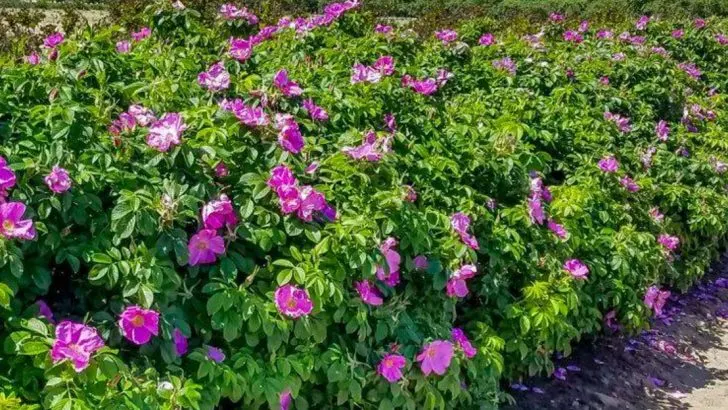Why plant a boring fence when you can eat your hedge? That’s right—those leafy barriers don’t just have to sit there looking polite. They can feed you. Berries, nuts, blooms, and bites, all while blocking the neighbor’s trampoline. This is the garden’s version of having your cake and eating it too. These shrubs pull double duty—gorgeous to look at, generous with harvest, and tough enough to stand guard year-round. Forget high-maintenance evergreens. These 10 beauties bring color, character, and a snack or two—no gate required.
Aronia Berry (Chokeberry)
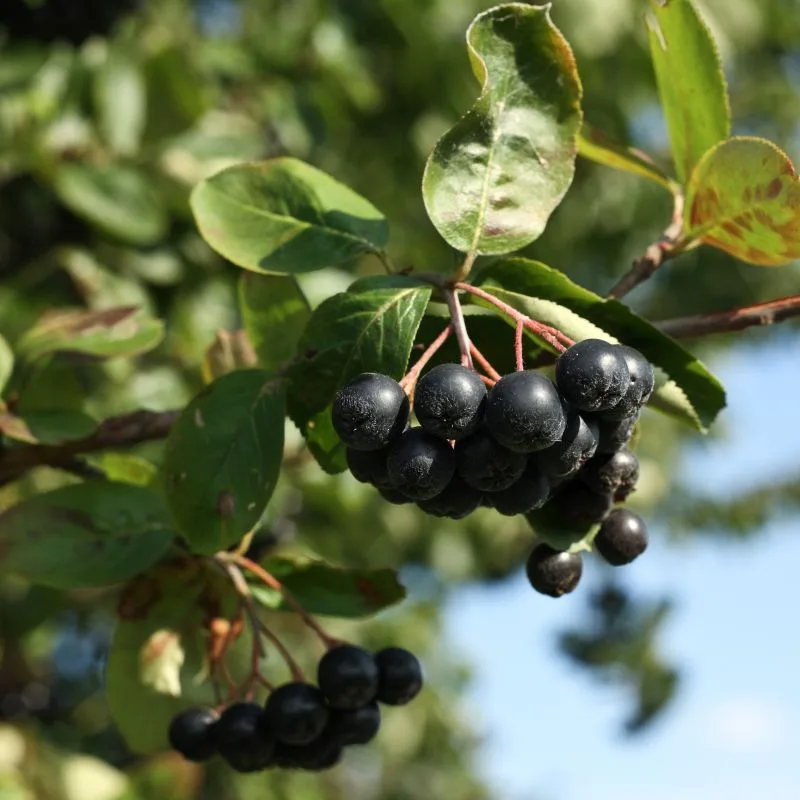
Aronia Berry, known for its striking dark berries, is a resilient shrub that thrives in various climates. The berries, though tart, are packed with antioxidants, making them a healthy addition to your diet. Aronia’s vibrant white flowers in spring and deep red foliage in fall add visual interest year-round.
This shrub is not only beautiful but also functional, serving as a natural privacy screen. Easily adaptable, it handles drought and different soil types with ease.
Did you know? Native Americans used Aronia berries for medicinal purposes, celebrating their health benefits long before they became trendy.
Blackcurrant
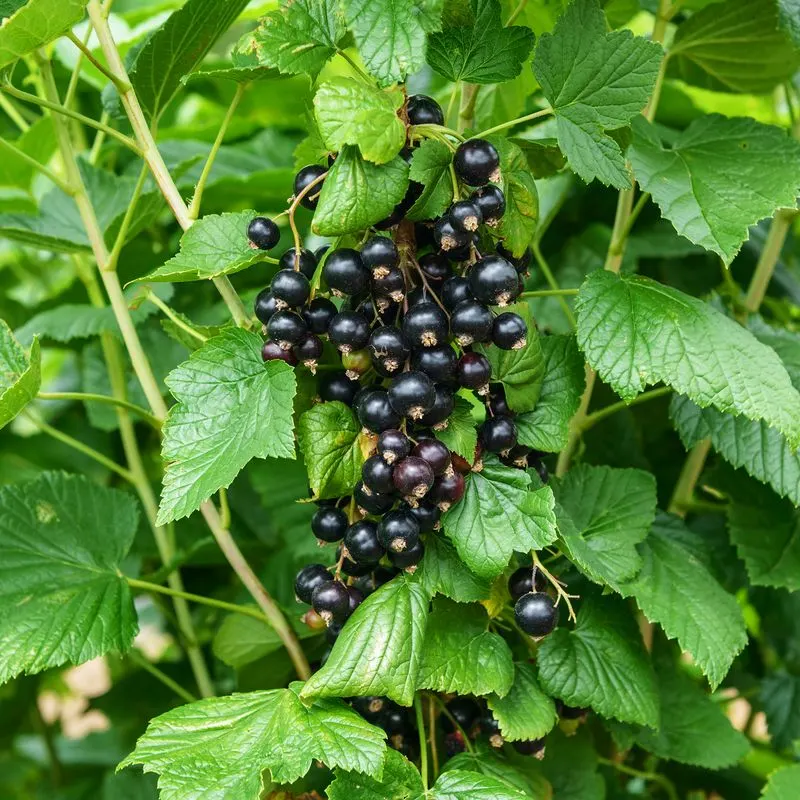
Blackcurrant bushes are a gardener’s delight. Their glossy, dark berries are rich in vitamin C, ideal for homemade jams and jellies. The shrub’s sweet fragrance in bloom attracts bees, aiding in pollination.
Blackcurrants are hardy, thriving even in colder climates. Their dense growth makes them perfect for hedges, providing both beauty and privacy.
Historically, blackcurrants gained popularity during World War II in Britain due to their nutritional value. Today, they remain a beloved choice for health-conscious gardeners seeking a bountiful harvest.
Elderberry
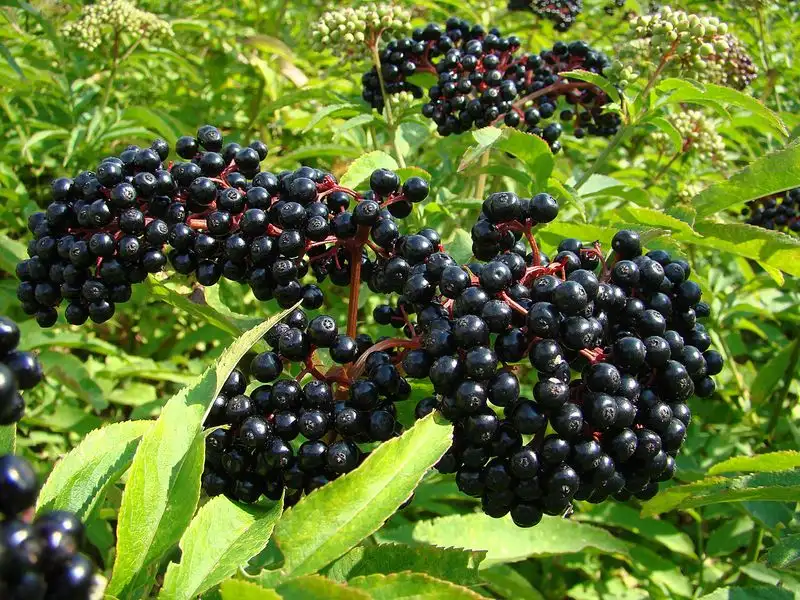
Elderberry shrubs offer more than just visual appeal; they’re a powerhouse of nutrition. Known for their immune-boosting properties, elderberries are often used in syrups and teas.
In addition to their health benefits, these shrubs provide excellent cover, growing tall with lush foliage. Their tiny cream-colored flowers in spring are picturesque against the green leaves.
Historically, elderberry wood was used for musical instruments, while the berries were celebrated for their healing properties. Today, elderberries continue to enchant gardeners as a decorative and practical choice.
Goji Berry
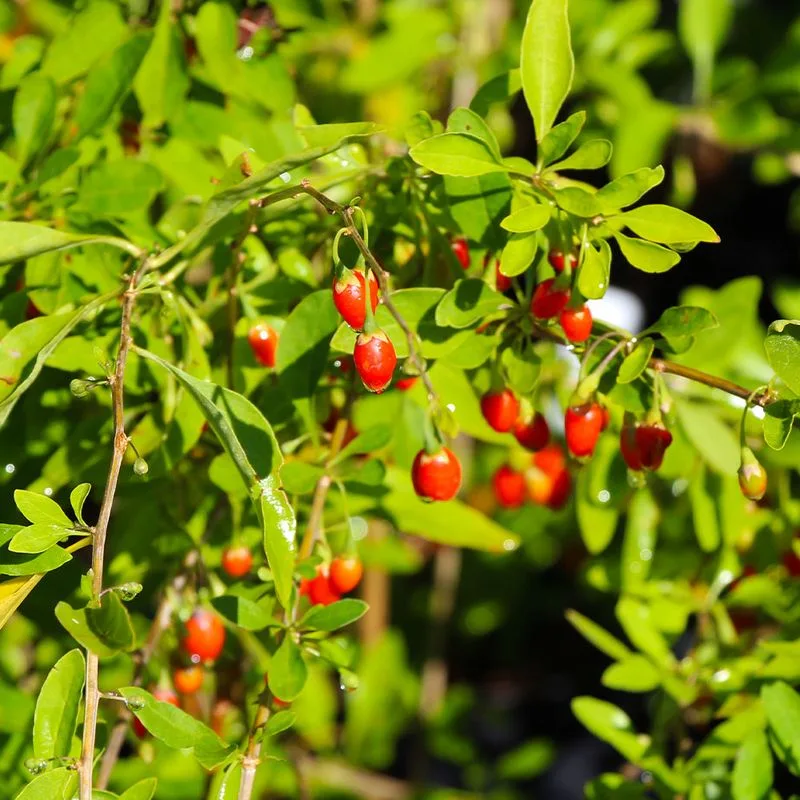
Goji Berry shrubs are known for their bright, nutrient-rich berries, often dubbed a superfood. These cheerful berries add a splash of color to any garden and are perfect for snacking or smoothies.
Goji shrubs are adaptable, flourishing in various soil conditions and climates. Their arching branches and narrow leaves create an appealing, exotic appearance.
Did you know? The Goji Berry has been used in traditional Chinese medicine for centuries, revered for its longevity-enhancing properties. Today, it’s a favorite among those looking for a unique, edible hedge option.
Hazelnut
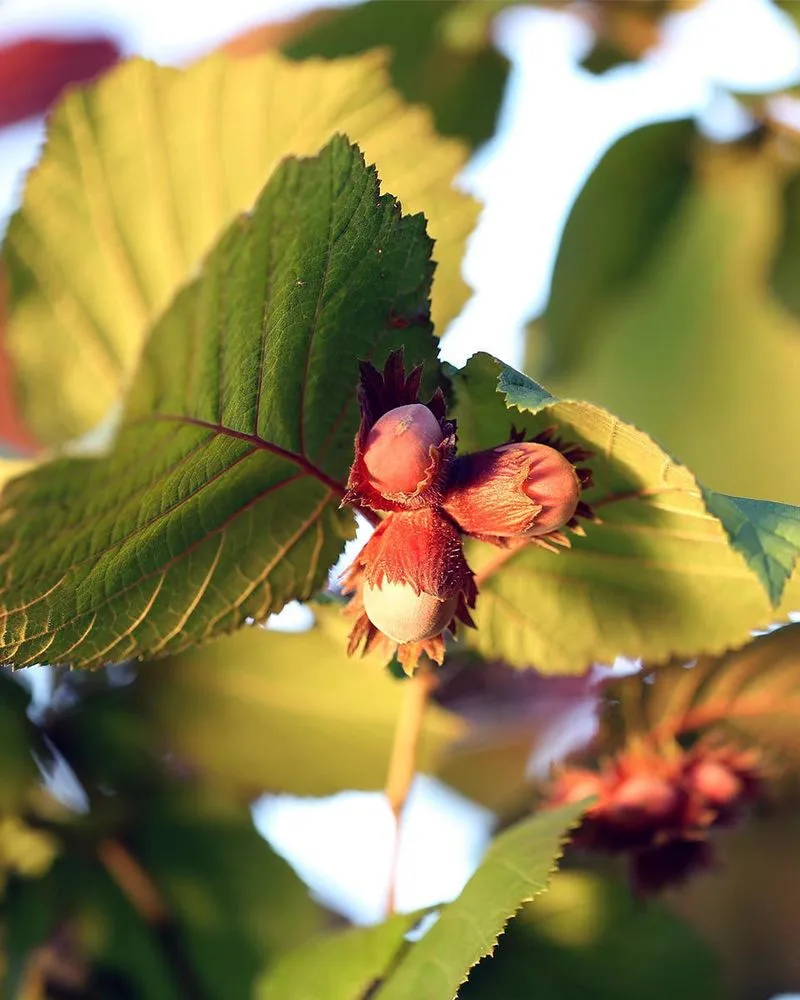
Hazelnut shrubs are a delightful choice for both food and privacy. Their nuts, encased in hard shells, are a delicious treat popular in both sweet and savory dishes.
These shrubs grow wide, forming an effective living barrier. In spring, they produce charming catkins that add texture to the landscape.
Hazelnuts have a rich history, particularly in Europe where they’ve been cultivated for centuries. Their versatility extends beyond the kitchen, as they are also an ecological asset, supporting wildlife and soil health in garden ecosystems.
Rugosa Rose
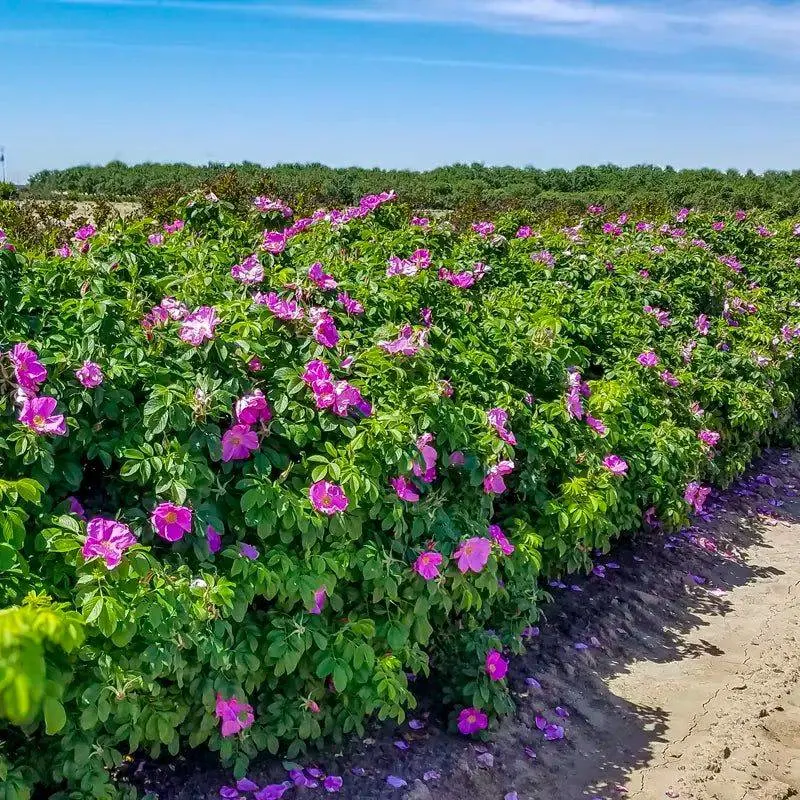
Rugosa Rose shrubs are cherished for their fragrant, wrinkled flowers and vibrant hips, rich in vitamin C. This hardy plant is ideal for less hospitable environments, thriving in sandy and saline soils.
Their dense, thorny growth makes Rugosa Roses excellent for security and wildlife habitat. Each season brings a new charm: lush blooms in summer, followed by colorful hips in fall.
These roses have graced gardens since antiquity, valued for both their beauty and practical uses. Today, they remain a popular choice for gardeners seeking an attractive yet functional hedge.
Sea Buckthorn
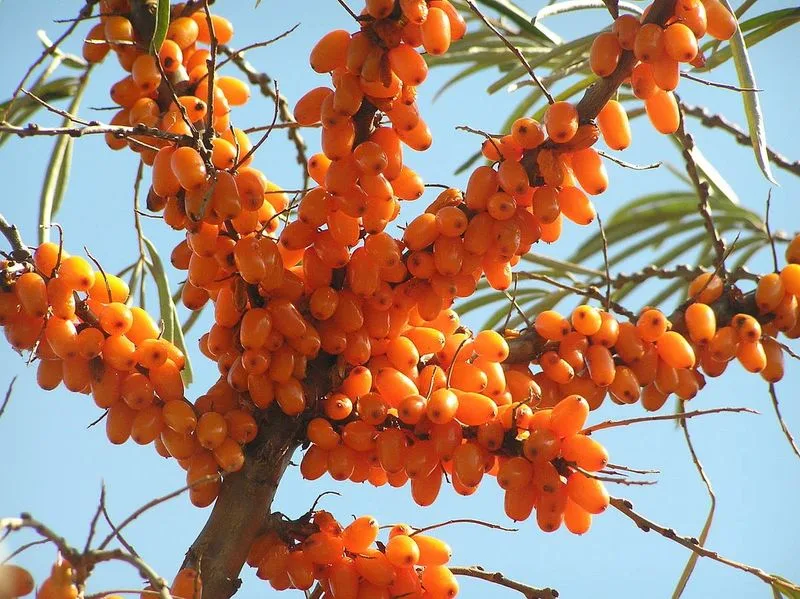
Sea Buckthorn shrubs bring a splash of color with their vivid orange berries, known for their high vitamin content. These berries are frequently used in juices and jams, offering both taste and health benefits.
The shrub’s silvery leaves and thorny branches provide a unique aesthetic, doubling as a deterrent for intruders. It thrives in poor, sandy soils, making it an excellent choice for coastal gardens.
Sea Buckthorn has a storied past, used in traditional medicine across Eurasia. Its resilience and productivity make it a valuable asset for modern gardeners.
Serviceberry
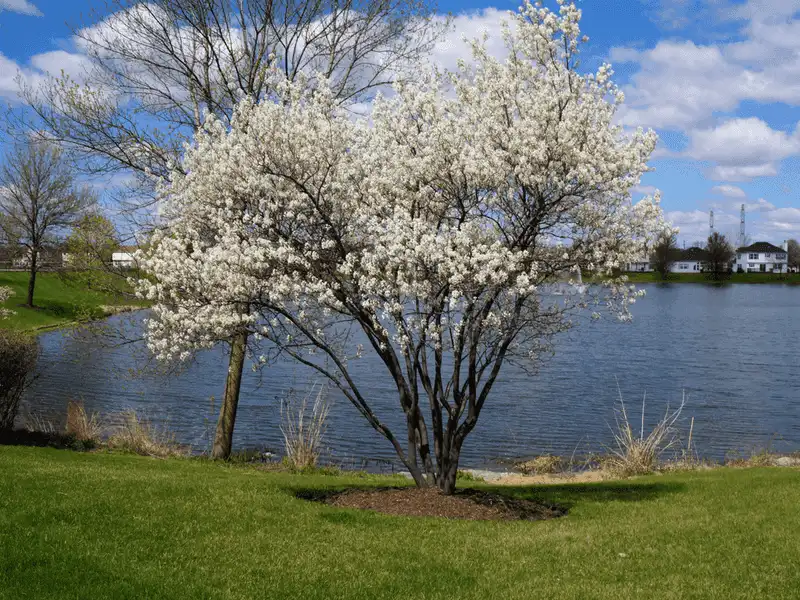
Serviceberry shrubs are beloved for their early blossoms and sweet, edible berries. These berries closely resemble blueberries and are a favorite for pies and preserves.
Serviceberries grow gracefully, with smooth bark and striking fall color. Their seasonal transitions offer continuous beauty from spring through autumn.
Historically, Serviceberries were known as ‘Juneberries,’ marking the time when they ripen. Today, they remain a cherished part of native landscaping, celebrated for their ornamental and edible qualities.
Cranberry Viburnum
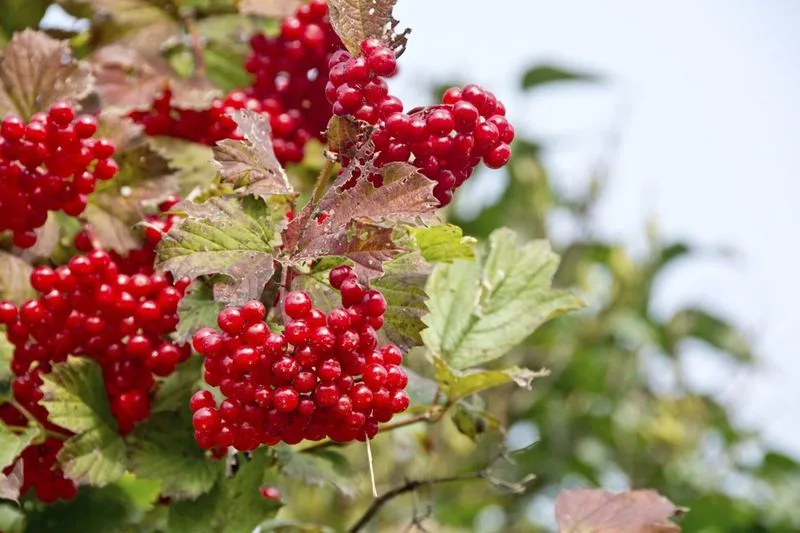
Cranberry Viburnum is admired for its clusters of bright red berries and attractive foliage. These berries, though tart, are perfect for making preserves and sauces.
As a shrub, it offers excellent privacy with its dense growth. Its white spring flowers and striking red fall foliage provide year-round interest.
This plant’s versatility extends to its ability to thrive in various soils, from wetlands to dry areas. Gardeners appreciate its adaptability and the vibrant splash it brings to any landscape.
Blueberry
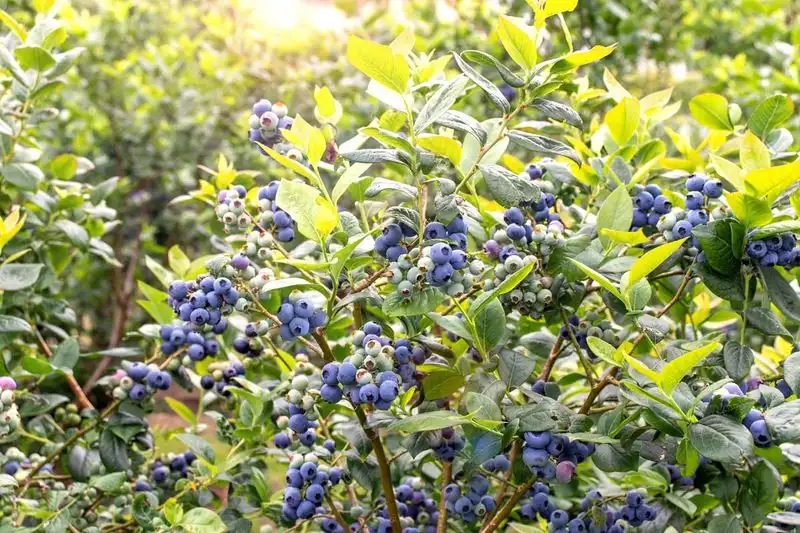
Blueberry shrubs are a quintessential choice for edible landscaping. Their sweet, juicy berries are a beloved treat across the world, ideal for fresh eating or baking.
These shrubs are compact, making them perfect for hedges in smaller gardens. Their white blossoms in spring and red foliage in fall add seasonal beauty.
Did you know? Blueberries are native to North America and have been enjoyed by indigenous peoples for centuries. Today, they are celebrated not just for their taste but also for their antioxidant properties.

